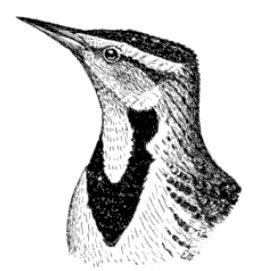Massachusetts was not the first state to pass laws for the protection of birds (as we'll see, New York had been trying to protect the Heath Hen for more than a century) but it was the first state to use the economic value of insectivorous birds as a reason for protecting them. The Act embedded above was introduced by Samuel P. P. Fay, of Cambridge on January 24, 1818, "excited considerable debate" on January 30 (according to papers at the time), and was finally approved by the Governor on February 12, 1818. Opponents in the legislature apparently regarded the Act as frivolous.
Section 1 of the Act called for close seasons on partridges & quails (March 1 to September 1) as well as woodcocks, snipes (added as an amendment in the Senate), larks and robins (March 1 to July 4). Offenders would be subject to fines. Section 2 of the Act added penalties for trespassing while poaching, but also stated that "nothing in this act shall be construed to prevent the killing of crows, blackbirds, owls, blue jays, and hawks, at any season of the year." In addition, individual towns could (and did), on an annual basis, vote to rescind the restriction.
"Useful," thus primarily referred to certain game birds (note that the soon-to-be extirpated wild turkey and the eventually extinct heath hen were not on the list) for their food value. Only the "lark" (eastern meadowlark) and the robin were protected among the songbirds, and then only during breeding season. (Both birds also had food value). Furthermore, certain birds (including blackbirds and blue jays) had no protection at all. Indeed, on February 20, the Governor approved another Act, this time: to Encourage the Destruction of Wolves, Bears, and other Mischievous Animals [including birds].
So while this law was an interesting start, Edward Forbush, for one, notes its inadequacy. Songbirds, generally, would not be protected in Massachusetts from boys with guns until mid-century. Nevertheless, the fact of this law eventually became useful as a rallying cry for citizens in other states also interesting in protecting useful birds, particularly the robin. And as we'll see in the next few posts, the Act provoked quite a bit of reaction in the press.
Incidentally, Samuel Fay, who introduced the bill and urged its passage, is now best remembered as a friend of the influential jurist, Joseph Story. Fay and Story campaigned together in the 1830s to plant trees at Cambridge Common. Story, in addition to serving as Associate Supreme Court Justice, would be the first president of Mt. Auburn Cemetery, which was designed at least in part as a sanctuary for birds.

No comments:
Post a Comment